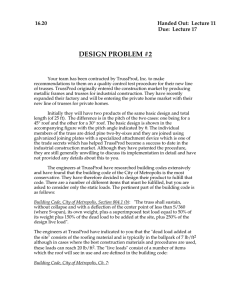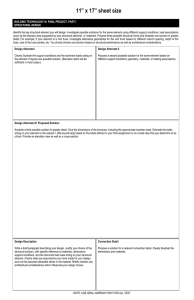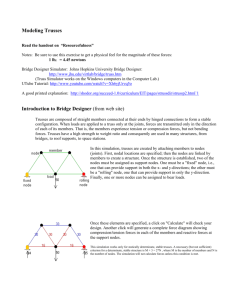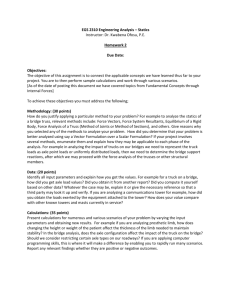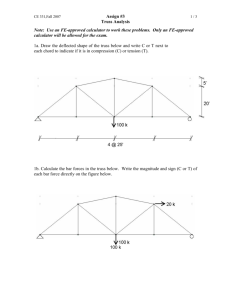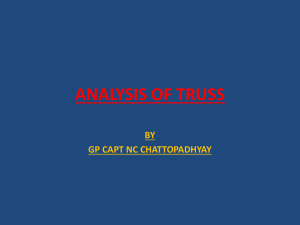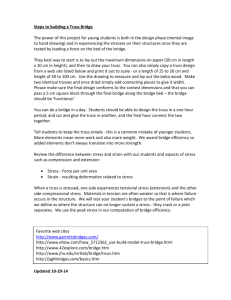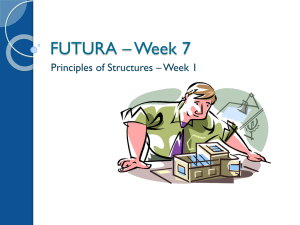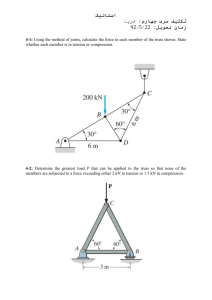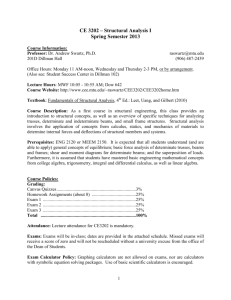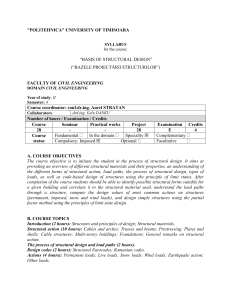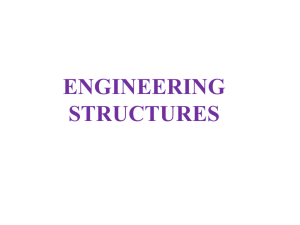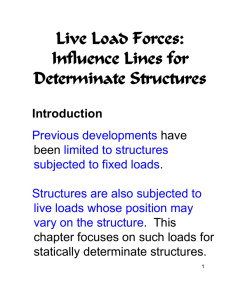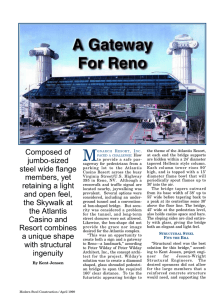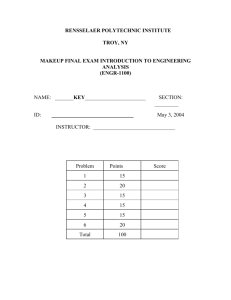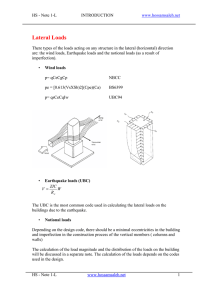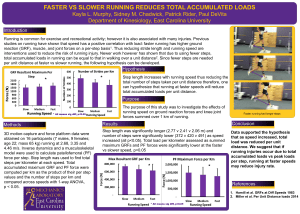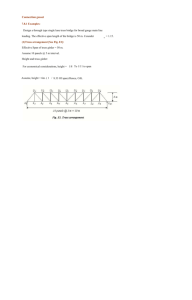Name: Section: ENGR 1310: Introduction to Engineering Truss
advertisement
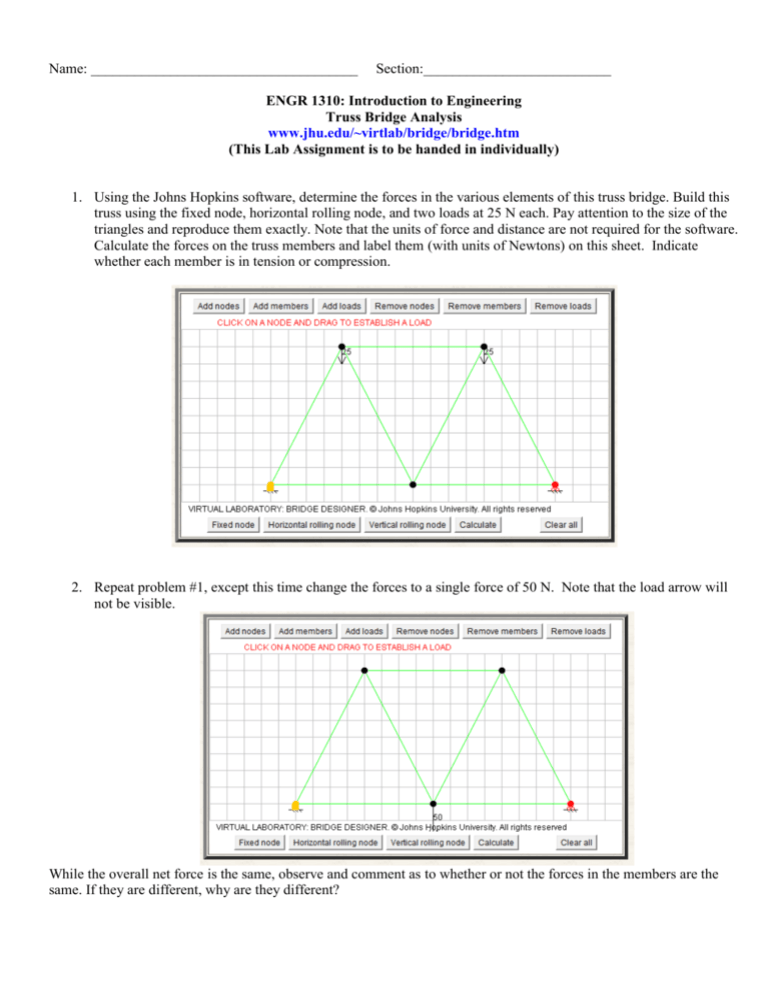
Name: _____________________________________ Section:__________________________ ENGR 1310: Introduction to Engineering Truss Bridge Analysis www.jhu.edu/~virtlab/bridge/bridge.htm (This Lab Assignment is to be handed in individually) 1. Using the Johns Hopkins software, determine the forces in the various elements of this truss bridge. Build this truss using the fixed node, horizontal rolling node, and two loads at 25 N each. Pay attention to the size of the triangles and reproduce them exactly. Note that the units of force and distance are not required for the software. Calculate the forces on the truss members and label them (with units of Newtons) on this sheet. Indicate whether each member is in tension or compression. 2. Repeat problem #1, except this time change the forces to a single force of 50 N. Note that the load arrow will not be visible. While the overall net force is the same, observe and comment as to whether or not the forces in the members are the same. If they are different, why are they different? 3. Determine the loads in the various members in the next three trusses. Note that we are holding the applied load and the width of the truss constant, while systematically reducing the height. This is called a “parametric” study to determine the effect of the ratio of the height to the width on the loads in the various members. This will help us develop some design “rules of thumb”. Calculate and label the forces in each member. Also write whether the load is in tension or compression. Height = 6 Height = 4 Height = 2 4. Once you have completed the analysis of the last three trusses, study the loads in the various horizontal and off angle elements. Observe the effect of the height-to-width (H:W) ratio on the maximum loads in the elements and how the location of the element experiencing the greatest load shifts as the H:W ratio changes. Note that the three trusses vary from 3:2 to 1:2 in H:W ratio. This should give you some idea of what is best for the truss that you will be designing. Summarize what you learned about the H:W ratio as it impacts the loads in the various members in your design. 5. Explore the effect of having more elements for a given H:W ratio. Determine the loads in each element and note them as you did on the previous exercises. Study the pattern of change in member loads as the number of elements changes and indicate what you have learned about the benefits or lack thereof provided by the additional members. As you continue to add members, you will add to the weight of the bridge. Which of these do you think would have the best strength-to-weight ratio? Why?

